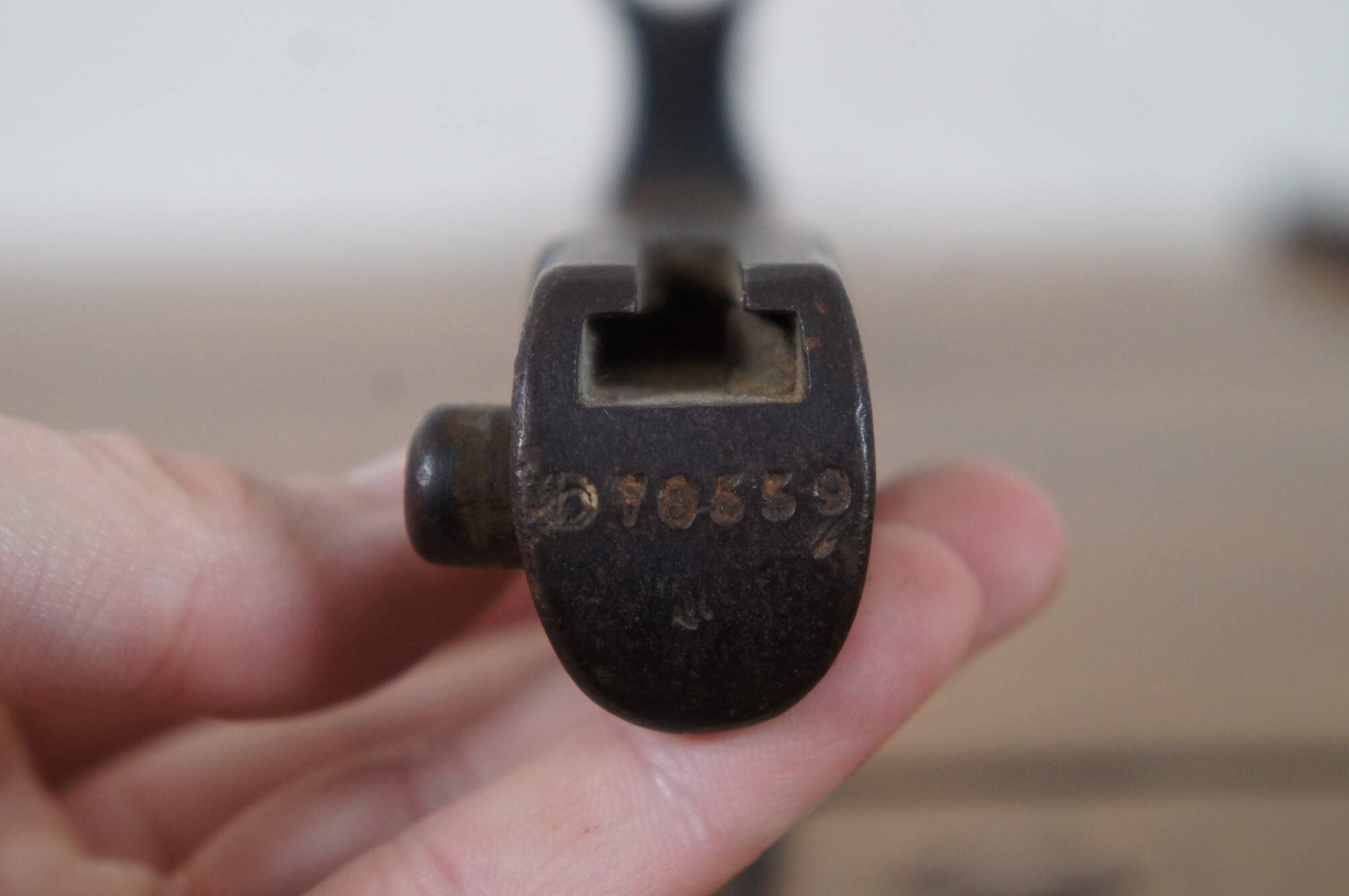
Antique WWII Japanese Army Type 30 Arisaka Bayonet Scabbard Hooked Quillon 21"
$280.00
Shipping:
Free Shipping Included
Delivery:
Estimated 2-15 Business Days
Payments:
Credit Card, Check, Cash, PayPal, Apple Pay, Venmo
Returns:
30 Days 100% Money Back Guarantee, Buyer Pays Return Shipping
Description
Antique World War II era Imperial Japanese Type 30 bayonet with hooked quillon, wood grip, and metal scabbard. This early model was made between 1936 and 1943 and came from the Tokyo or Kokura Arsenal.
Province
Estate of J. Frederic Gagel, owner of multiple Thoroughbred race horses that competed in the Narragansett Special and Kentucky Derby. Their family heritage was strongly intertwined with the military having officers in battles dating back to the American Revolution.
“The Type 30 bayonet was a bayonet designed for the Imperial Japanese Army to be used with the Arisaka Type 30 Rifle and was later used on the Type 38 and Type 99 rifles. Some 8.4 million were produced, and it remained in front-line use from the Russo-Japanese War to the end of World War II.”
The Type 30 bayonet (三十年式銃剣, sanjūnen-shiki jūken) was a bayonet designed for the Imperial Japanese Army to be used with the Arisaka Type 30 Rifle and was later used on the Type 38 and Type 99 rifles, Types 96 and 99 light machine guns, and the Type 100 submachine gun. Some 8.4 million were produced, and it remained in front-line use from the Russo-Japanese War to the end of World War II. All Japanese infantrymen were issued with the Type 30, whether they were armed with a rifle or pistol, or even if they were unarmed. Because of its reliability, it was a valuable tool for the Japanese army.
The Type 30 Bayonet was a single-edged sword bayonet with a 400 millimetres (15.75 in) blade and an overall length of 514 millimetres (20.24 in) with a weight of approximately 700 grams. The Type 30 bayonet is also known as the ""Pattern 1897 bayonet"". Early Type 30 bayonets usually sported a J-shaped hooked quillon guard designed to catch and trap the enemy's blade. By 1942 the quillon was eliminated to save materials and decrease production time, leaving only a straight guard. Type 30 scabbards went from metal (pre-1942) to vulcanized fiber (1942-43), and finally to wood or bamboo (1944-45). Scabbards were usually painted black and called a burdock sword (gobo ken) as it looked like burdock, a vegetable.
The design was intended to give the average Japanese infantryman a long enough reach to pierce the abdomen of a cavalryman. However, the structure had a number of drawbacks, some caused by the poor quality of forgings used, which tended to rust quickly and not hold an edge, and break when bent.
The weapon was manufactured from 1897 to 1945 at a number of locations, including the Kokura Arsenal, Koishikawa Arsenal (Tokyo), and Nagoya Arsenal, as well as under contract by private manufacturers including Matsushita, and Toyoda Automatic Loom.
Condition
Good Antique Condition - Some discoloration/tarnish, missing piece on hilt
Dimensions
20.75” x 3.75” x 0.875” (Width x Depth x Height) / Blade Length - 15.5”










